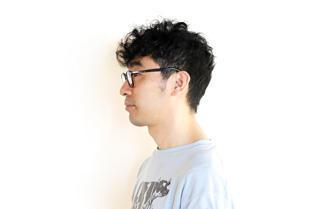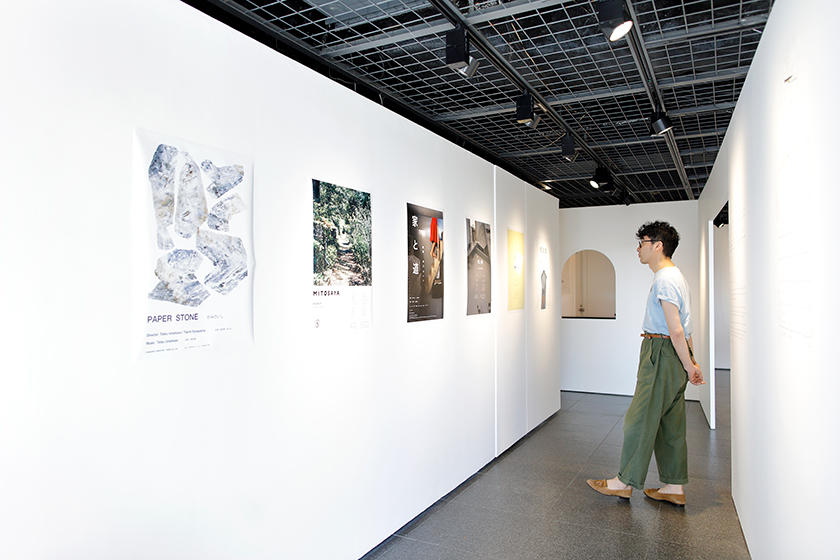


INTERVIEW
106
Hideyuki NakayamaArchitect
A city with no boundaries where genres intermingle
Having a different perspective will make changes to mapping conventional expectations
A house that resembles a wooden box appearing to be floating a little above the ground and two houses that are connected underground on either side of a road. Mr. Hideyuki Nakayama’s architecture breezily exceeds our imagination and has given birth to unexpected expressions in space. The same may be said for the “Hideyuki Nakayama Exhibition: and then”, being held at TOTO Gallery Ma. We will take a look at the way his exhibition is structured, the ways in which he faces architecture and art, and how he perceives cities to delve into the reasons why the works created by Mr. Nakayama appeal to people.
The hereafter of architecture that even architects are unable to see
I think architecture exhibitions in general are mostly venues where the thoughts and philosophies of architects that are generated in the process of envisioning architecture are revealed. But that can sometimes be difficult to understand from the perspective of people who are not usually interested in architecture, for example, relatives or old friends. What exactly is an exhibition that will get across to those who aren't well informed in architecture? In considering these types of ideas, I started wondering if architecture could be better conveyed by having people see the unknown time after works are completed and not the thoughts and philosophies that occur before the structures are built. That was the initial concept that led me to consider the exhibition, the "Hideyuki Nakayama Exhibition: and then".
These days, everyone has a camera in hand and there are no longer those who point their fingers at you and call you a narcissist when you take a picture of yourself, are there? Then wouldn't it also be natural to put on display scenes of the owner of the project living his daily life in front of a camera he has set up on his own initiative? Of course, photos would have worked as well, but there are fewer lies when something is swaying in the wind or a person is eating or sleeping. That's what led to my choice of the films.
I made five short films on five works of architecture but have not mostly been involved in their production and asked people such as former staff who had been involved in the design of the works in the past to do the shooting and direction. There was just one thing that I asked everyone at the outset, to "go with a modest amount of sugar". There was no need for emotional stories with an introduction, developments, twists, and a conclusion; all I wanted was for the things that are there to simply be captured. After that, I would say "Either way is fine" when they asked me questions or sought my opinion once the filming began and tried to minimize my involvement as much as possible. There were words that a certain adventure photographer once said that remained in my mind: "An observer is an existence who can change the outcomes of an observation." I think I was afraid that my involvement would have caused changes where something should have been there exactly the way it had.
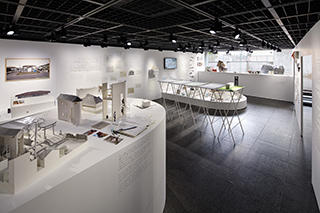
"Hideyuki Nakayama Exhibition: and then"
How are architectural works used and what types of everyday scenes occur once they are completed? The "Hideyuki Nakayama Exhibition: and then" is a uniquely creative solo exhibition that focuses on "the hereafter for architecture" that will change the perceptions of architecture exhibitions. The overall gallery has been made into a mini-theater where a total of six works ― five short films shot by five directors and one additional film ― are shown. On display in the exhibition room, set up as a lobby, are drawings and mockups of the production process of filming and the architectural works which are being introduced. Also interesting is the commentary that has been hand-written by Mr. Nakayama. The exhibition is being held at the TOTO Gallery Ma from May 23, 2019 (Thu) through August 4 (Sun). Photo: ©Nacása & Partners Inc.
The power of life that thrives in what is left as is
I was all excited, feeling as if it were someone else's business and I'd become part of the audience as I watched the works that were created by each director, and thought at first, uh-oh, this has gotten bad (laugh). You see, the number of kids had increased, we couldn't keep up in terms of space, the scenes were nothing like those in the completion photos, and the graphic state of the now was being shown with no efforts being made to try to hide anything. The meager imagination of the architect was being exposed exactly as it was, and I was a little worried when they first showed me the footage. But as I continued to watch the films, the concerns of the architect eventually became irrelevant. When I started to forget that I was the architect and became a single individual who was viewing the images, I could see that the power of life had been captured right there. Even to the extent that I was absently thinking how well it was to be alive.
For example, in a sense, children are very cruel creatures. The intentions behind designs that adults come up with have nothing whatsoever to do with them. I was essentially supposed to have loved that type of freedom. But once I'm on the planning side, I forget about things like that before I know it and can't help thinking that I have to control everything. But as I continued to sit in the audience, I gradually began to enjoy the fact that the architect who was getting to be that way was very simply betrayed. I was supposed to have had an initial desire to create something that's longer in duration like major flows in time that exist in places other than things like architecture and planning, so my feeling now is that the methods I used for this exhibition were fine.
The reason why we turned the gallery into a film theater
To tell you the truth, I'm not fond of the areas at exhibitions where they show video images. This is because you usually start watching somewhere midway in the work and you are driven by a sense of obligation to watch the whole thing. The best thing about art museums and galleries is that you can go when you like and spend as much time as you want in front of a work that catches your eye. I thought at first that I wanted to avoid making the film display the focus of the exhibition where I will end up losing that quality. But when I considered whether people who feel the same way that I do don't like film images, they can actually be very fond of going to movie theaters. So I thought then that we could set up this gallery like a movie theater from the very outset. It was then that I thought of a play on words to read the "TOTO Gallery Ma" (nicknamed "Gallerma")" as "CINE-MA (cinema)" (laugh). You relax when you come up with something silly, and just one name can give something a different meaning. Words are really interesting.
A movie theater is a place for watching movies, but it's also significant that you like their very atmosphere, and that's what makes you want to take the time to go there. It's exciting just to be in the lobby where you see posters of movies that have been shown in the past or to find displays of props and wardrobes from works that are now showing. It's nice that they can be an excuse to invite someone out to see a film, and an experience of going to a movie theater consists of all of those things combined.
"A movie theater" and not a "gallery with a film exhibit". When I thought about it that way, the natural course to take was to settle with getting no new mockups or drawings ready for the exhibition, because it would have basically been awkward to create more works pertaining to the content once the films were completed and to display them in the lobby. Although there were some things that were embarrassing to show, I turned my office inside out in devising plans for the lobby with only works that were created up until the time that the architectural works were completed.
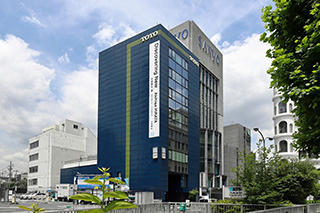
TOTO Gallery Ma
A gallery operated by TOTO that specializes in architecture and design. Since opening in October 1985, the gallery has been committed to organizing exhibitions of architects and designers both in Japan and abroad. The gallery employs a unique exhibition method where it allows exhibitors to design their exhibitions so the entire display area itself becomes a creative work.

Speaking emotionally, I've finally finished submitting my report
Though I've mentioned movie theaters, it doesn't mean that we can set up cup holders and fluffy seats covered with velvet fabric. Still, I am an architect, and I can't simply make it a venue just for people to watch a projector screen. So the one way I intervened was to create a camera on the premise that we would have a special screen and to pass it onto one of the directors. It was the camera that was used for the film "Curves and Chords"--there's a genius of an engineer among the new staff at my office who made a device for a 360-degree camera to go up and down the atrium of a building from scratch. The result was a movie theater that only exists here where you can simultaneously see all directions projected on three screens.
One of the important joys of watching a movie is to by a brochure on your way home. Hiroshi Eguchi, who did the shooting for "mitosaya botanical distillery", is also a professional with books, and I also had him take part in editing a collection of works called ", and then: 5 films of 5 architectures". The book is like five movie brochures bound as one. You know how movie brochures start with gravure photos that show scenes from the film and introductions of the characters and include various topics, sometimes providing commentary on the music, information on location sites, and complicated details from the director? This book is also a little different from generic collections of works by architects, and the photos of the architectural works here are stills images from the films, along with notes and sketches from the initial design stage, directors' storyboards, scores for the soundtracks, and information on details on the works that people who've seen the films are likely to want to know about. Of course, it also includes tedious text that's been written by the architect (laugh). By using the form of a movie brochure it turned out to be a pretty good peg for architecture magazines and collections of works, and during its production we talked about how it would be a success if we could include things we thought many people would be interested in finding out about.
While exhibitions also serve as opportunities to reflect upon the work you've done in the past, for me it's like everything has only just begun. At present, I feel like I've finally finished submitting a report. So I think it's likely that it'll still take a lot of time for me to create books or exhibitions that are objective reflections about my work.

"Curves and Chords"
"Curves and Chords", completed in 2017, is a residence-slash-workplace that has ten layers of flat surfaces in different shapes overlapping in around a two-floor structure. A motor-controlled 360-degree camera moves up and down the atrium to show in a matter-of-fact way the events that unfold there over the course of a day from morning to evening.
Film director: Shiita Happo
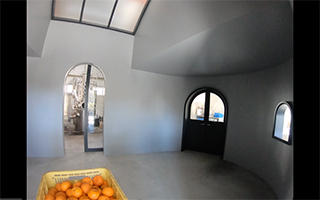
"mitosaya botanical distillery"
Completed in 2018. A medicinal herb garden that closed after visitors stopped coming there has been reborn as a distillery that uses fruits and herbs. Hiroshi Eguchi handled the shooting and recorded the days of making liquor that had just gotten underway.
Videographer: Hiroshi Eguchi
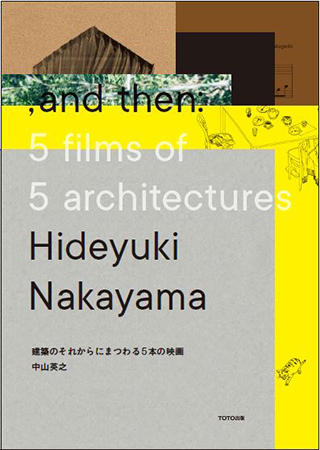
", and then: 5 films of 5 architectures"
A collection of architectural works for the "Hideyuki Nakayama Exhibition: and then" created with the concept of a movie brochure. The design was handled by Idea Oshima, who has worked on a large number of brochures and other graphics for films. The the collection uses different designs and paper for each work to create expressions for five brochures. Once the event ends, the five films may be viewed by visiting the URL links contained in the book.
Wonderful things besides architecture will take you to a new world
When I was going to high school, my grades were an awful and there was nothing that I was particularly involved in (laugh). I'm still pretty absent-minded but be that as it may, my first encounter with architecture was when I just happened to step into a gallery, and that was when a particular world opened up to me. Likewise as with my interest in architecture itself, the biggest factor was the impact I received from the people I met at the various places that I went to, like my prep school and my university. The stories they shared were filled with words I'd never heard of in the high school classroom and words I didn't know, and I really adored them. Since then, I would quietly take notes of the names of movies, artists, musicians, and fashion designers I knew nothing about and commute alone each day to movie theaters and galleries. I started noticing the text and critic whenever I saw something new and became aware that there were different types of words in the world besides novels and literature.
The words that I came across during this period are very important to me. The interest that I developed in architecture served as an impetus for me to be in possession of the words that would allow me to speak properly with people in other areas like film directors, authors, and fashion designers when the opportunity arose. And again, when you learn the words spoken in other fields it also expands your thinking in architecture.
In the lobby at "Cine Ma" are these words and books that I came across through these types of processes, and they're set up between mockups and architectural drawings. One example is "Hitchcock/Truffaut", a book where the film director François Truffaut interviewed Alfred Hitchcock. A film professional asking a person of the same profession--and an existence who is like a God at that--about the secrets to creation--there could never be a better textbook than that. In the world of architecture, Arata Isozaki is exceptional and another existence like that, but as architects are basically people who want their stories to be heard, it isn't very likely that they would interview someone in the same profession (laugh). I think film directors are similar in that way, but there are rare people like Truffaut who not only didn't hide his admiration for a fellow director but also put it together in a text format.
In these ways, I love books where professionals in their respective genres gently reveal the depths of their fields. "Tanoshii Shashin" (Fun photography) by Mr. Takashi Honma is a recent example. For me, encounters with books like that might take the thoughts in my head much further than books that provide commentary on architecture, and they will also show me new worlds. At this point, watching films and having heart-fluttering experiences over fashion and discovering fresh, new ideas and different ways to view the world have become indispensable for me in continuing to think about architecture.
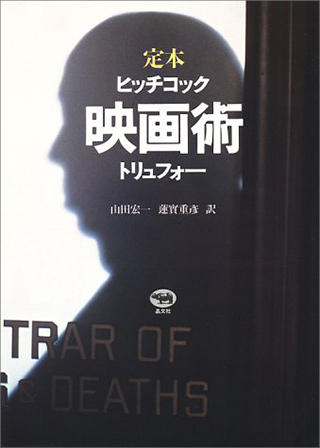
"Hitchcock/Truffaut"
A book that encompasses an interview by French film director François Truffaut with Alfred Hitchcock, the Master of Suspense that had been conducted for fifty hours. Along with an enormous number of photographs, comprehensive commentary is offered on Hitchcock's techniques and film theory. A bible for filmmaking that has been translated into various languages.
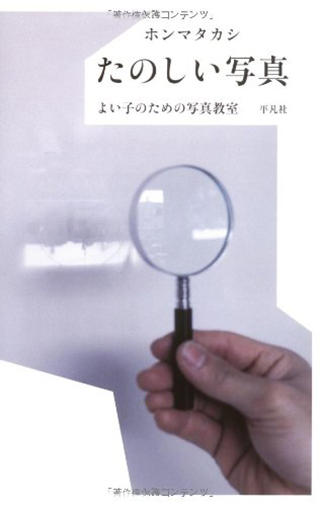
"Tanoshii Shashin--Yoi Ko no Tameno Shashin Kyoshitsu" (Fun photography: Photo workshop for good kids)
A book where Takashi Honma, a leader in modern photography, offers gentle commentary on photography. Takes the form of a textbook that allows readers to learn everything from the history of photography to the methods for shooting and to follow the thoughts of the photographer himself. The book has become part of a series and publications extend to the third installment.
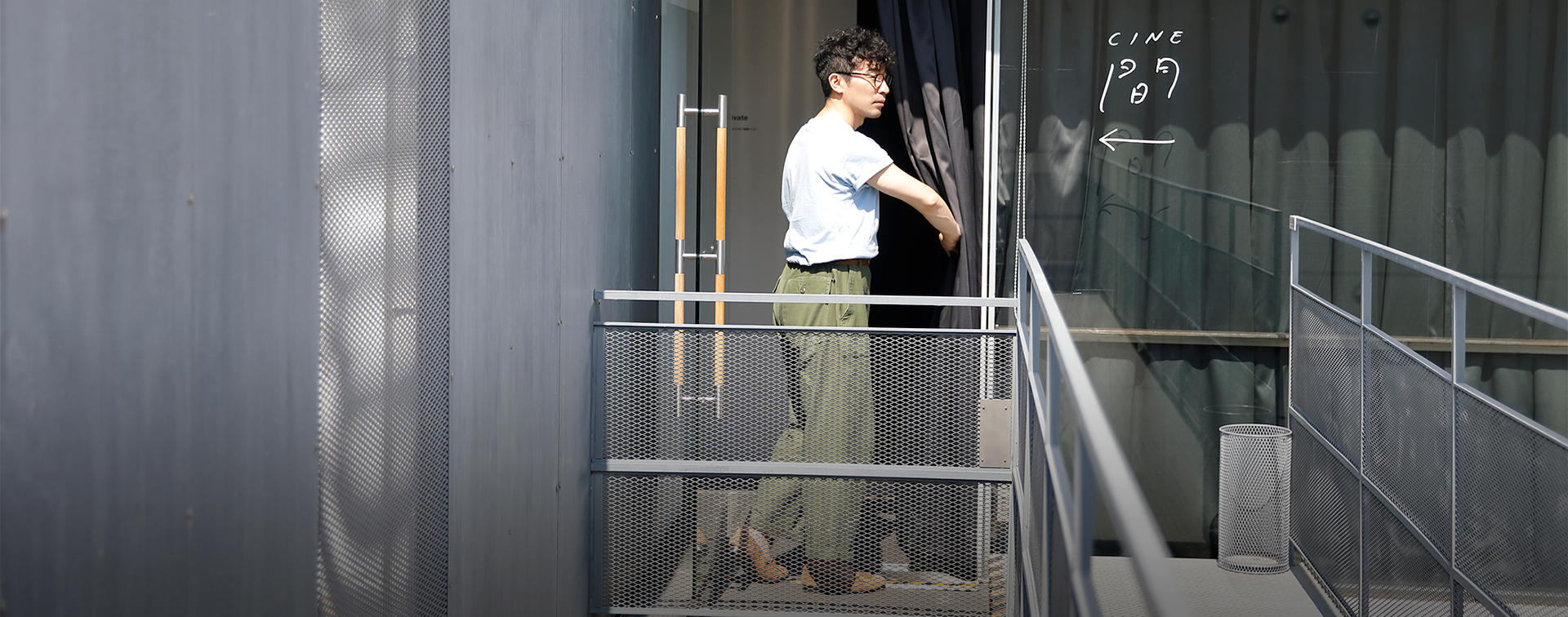
Creating a city where nothing exists
While I may say things like that, the truth of the matter is that I don't really want to see too much in the way of work by other architects. That's why I've never gone on trips to see architectural works, and even when I travel to some city I come home without seeing the architecture. I guess I'm afraid to feel a sense of despair. Truth be told, I've barely ever taken a good look at Le Corbusier's work.
In that way, I'm reluctant to go out much, but there was once a time when I had to go to Las Vegas on my own. It was interesting to see such an artificial city existing in the middle of the desert, on top of which their rules were completely different from those in other cities. Tradition and history have nothing to do with it--it's kind of like building a city on the moon. In an era when cities throughout the world look almost identical, it has a sort of strange type of originality. But in a sense, it's a place where fake things are gathered together and each part isn't original at all. For some reason, that curiousness has continued to stay on my mind. Maybe it's the same thing as wanting to see the Burning Man event in the United States or the desire to go to Banksy's Dismaland. I'm not sure myself yet, but for some reason; I'm currently interested in giving thought to the world starting at a place where nothing exists.
Reread the space before you and you'll see another expression of the city
I serve as an associate professor at the Tokyo University of the Arts, and while we have departments in music and fine art there's nowhere for people who are pursuing careers in beauty or fashion. I love seeing people's hairstyles and fashion on the streets and am really interested in finding out the types of studying that they do. But because things are clearly divided up, for example between universities and vocational schools, people may really be interested in each other but there are no opportunities for them to think about things together. Even if there were, they would take the form, for example, of designing a boutique or beauty salon. I have a feeling that Roppongi is a place that has something that gives you a premonition of intermingling beyond walls like that.
To do that, if there was something that could be done from the perspective of space, I think there's a chance that it might not take the form of architecture. For example, there used to be pedestrian zones called "Hoko-ten" (pedestrian heaven) in Harajuku. They still have one in Ginza today, but it simply means the cars that usually overwhelm the space there are gone and venues are produced where everything imaginable can go ahead and happen on their own. A place like that gives you much more freedom and is more appealing than a cool special stage that's been designed by an architect. Roppongi is a place where various types of transportation facilities cross each other in a complicated manner, from elevated areas to the underground. If it were possible to create moments where you could simply forget about the initial meaning or purpose of space like and to take another look at it, then maybe it would be possible to reread the entire city, even if the shape and form remain as they are. I think lovely hairstyles and fashion would probably match places like that.
Watching the city from a honeybee's perspective
I'm not saying this because fashion is "clothing" and architecture is "shelter", but through my experience with my work with mitosaya botanical distillery I've recently become interested in "food" as well. Still, liquor isn't something that's absolutely essential for people to live, and "food" isn't all that serious, either. They also started raising honeybees there. Though I've never been interested in pets or plants to date, I would now like to try raising honeybees myself. Honeybees are said to be able to fly as far as three kilometers, which means that if they were raised in Roppongi for example, they would be able to fly to Shinjuku Gyoen or Meiji Shrine. The maps in my head start to change when I walk around the city imagining the range of activities for honeybees as I stroll around the city.
I've talked about cities changing when they lose their initial meaning. Honeybees perceive such an environment with a perspective that's different from ours, and the world that they piece together is completely different from our world. A different world becomes apparent when we take on a perspective that's different from ours. In that sense, I've recently become interested in food and the primary industries.

mitosaya botanical distillery
A project was launched in 2017 to take over the site of a medicinal herb garden in Otaki-machi, Chiba Prefecture that closed at the end of 2015 and to set up a botanical brandy distillery. Besides growing plants and herbs that will be used as ingredients for the distilled liquor, honeybees are also being raised since 2018 in an attempt to create an ecosystem at the facility. Mr. Nakayama is responsible for the designs for the distillation facility and other such items.
Editor's thoughts......
Architecture is difficult to figure out. That was the vague image that I had, but on viewing Mr. Nakayama's exhibition and listening to him talk about it, I can't help feeling that I've become just a little bit closer to architecture. Like a Hitchcock film, there must be various contraptions that allow everyone from those who casually take a look to those who truly enjoy it. The tee shirt he was wearing at the time of the interview that had a cow printed on it was also a bit of a contraption for him to entertain. It appeared to be a choice he had made in line with the primary industries that he talked about at the end of the interview. "Impact that's comfortable" was apparent in both the things Mr. Nakayama creates as well as his character. (text_ikuko hyodo)
RANKING
ALL
CATEGORY




